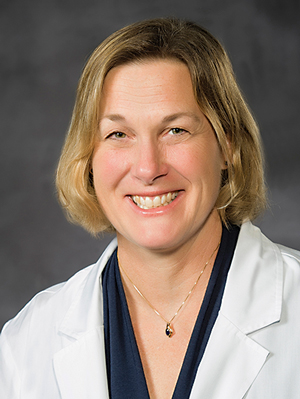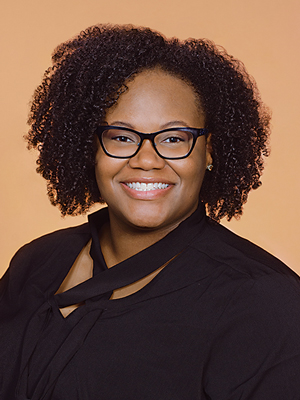Freshman year of high school can be challenging for anyone, particularly when the student is enrolled at one of Chesterfield County Public Schools’ rigorous specialty centers.
For Sydney Dudley, the typical struggles were compounded by the five concussions she had experienced over the previous two years. The first concussion happened in seventh grade when Sydney was playing recreational soccer and a ball hit her in the head. Initially, Sydney was not aware of any symptoms. When the coach asked how she was doing, she told him the truth: She felt fine. Because her team was short on players, Sydney stayed on the field.
But things changed when the game ended. “I felt dizzy and light-headed,” Sydney says. “I just felt a little off.”
Sydney’s mom, Deb, was worried, particularly because Sydney had experienced neurological issues at birth that had required surgery. “We were concerned about the larger impact, so we took Sydney to the emergency room,” says Deb. Although Sydney’s CT scan was clear, she was diagnosed with a concussion.
Sydney’s concussion required some adjustments and special care. For several weeks, she underwent therapy at Sheltering Arms and reduced the number of hours she attended middle school. Because some experts believe exposure to electronics can be harmful after a concussion, Sydney reduced her screen time. Instead of using a computer for schoolwork, she printed out worksheets. She also took frequent breaks from her phone.
A passionate reader, Sydney felt frustrated when she couldn’t read without experiencing symptoms. But she knew she needed to prioritize her care, so she found ways to adjust. “I had periods of cognitive rest,” says Sydney, “where I would lie in a dark room and listen to an audio book.”
Unfortunately, Sydney’s experience with concussions didn’t end with that initial soccer injury. When she was almost cleared medically from her first concussion, a random accident resulted in another concussion. This time, Sydney immediately knew something was wrong, and the family sought medical care. “I was back at square one for physical therapy,” Sydney says. To be cautious, Sydney decided not to play soccer again for a while.
Come fall, though, a full year after her first concussion, Sydney signed up to play soccer again. At a practice, what she feared most happened again: She got hit in the head by a ball. Once again, Sydney was back at Sheltering Arms for physical therapy. “Sheltering Arms was a godsend for physical therapy and recovery,” says Deb. “They use state-of-the-art methods [for working with patients with concussions].”
Experiencing that third concussion was traumatizing for Sydney. She gave up organized sports for good. Sydney signed up for online gym instead of in-school PE to avoid risky situations, and she focused on other types of physical activity, like running and yoga.
The third concussion was not only traumatizing, it led to headaches that still plague Sydney to this day. “I have a busy schedule, but I have had to make sure I take time to lie down every day,” she says. Prioritizing rest can be a challenge because of her demanding coursework at school, extracurricular activities, and volunteering at the local veterans’ hospital. Sydney knows that she requires the extra sleep, and she makes time to heal.
What to Know About Concussions
According to the American Academy of Pediatricians (AAP), each year, between one and two million children under age eighteen experience concussions, a form of traumatic brain injury caused primarily by a bump or jolt to the head. Many experts believe, however, that concussions are under-reported, hence that broad range.

While less than half of concussions are related to organized sports, it’s easy to see why parents of young athletes worry about the risk of concussions: Between two and fifteen percent of children who participate in organized sports will get a concussion in a given season.
Among high school female athletes, concussions occur most frequently with soccer, followed by lacrosse, field hockey, and basketball. Among high school male athletes, concussions occur most frequently with football, followed by lacrosse, ice hockey, and wrestling. The AAP acknowledges that more research is needed on concussions among middle-school athletes; the research that exists shows that middle school tackle football players experience even higher rates of concussions than high school football players.
Because concussions typically occur as a result of accidental contact, it is not always feasible to prevent them. “To the extent you can prevent accidents and head trauma, you can prevent concussions,” says Claire Thomas, MD, of Commonwealth Primary Care. Helmets and seatbelts, for example, can help prevent concussions. Of course, wearing a helmet while bike riding, riding in a golf cart, or skating is important, and required in many families, but no child wants to wear a helmet every waking minute of the day, and even the most cautious parent wouldn’t expect that.
When sports are involved, however, it’s a different story. Katherine L. Dec, MD, a sports medicine physician with the Children’s Hospital of Richmond at VCU, explains that it is possible to minimize the risk of sports-related concussions. “Following the rules of the game, wearing properly fitting equipment, and being nutritionally and physically prepared to engage in your sport will minimize the risk of the body contact or the head contact that may impart a concussive event,” Dr. Dec says.
Symptoms of Concussions
Symptoms of a concussion are wide-ranging and can include headaches, nausea, dizziness, blurry vision, fatigue, trouble concentrating, depression, and changes in sleep patterns. According to the AAP report, research has shown that females typically report more severe symptoms than males.
While symptoms may occur within minutes of impact, that is not always the case. As in Sydney’s case, symptoms can emerge several hours after the head trauma, or even later, when the brain is engaged in another activity.
That’s why medical professionals recommend removing an athlete from an activity after the impact has occurred. According to Dr. Dec, the suspicion of a concussion should result in the removal of the athlete from the playing field until the player can be examined by a healthcare provider. “When in doubt, sit them out from an activity is the rule of thumb,” says Dr. Dec.
The steps taken following a concussion can affect the length of recovery and reduce the long-term effects of concussions. “One of the most important steps is removal from the sports field and assessment,” says Dr. Dec. “Continuing to play in the same game or that same day may slow recovery and risk the chance of a second injury.”
The AAP recommends that athletes be given a sideline assessment when the injury occurs, ideally by a medical provider familiar with the child who may be able to notice more subtle changes. Many high school and middle school sports programs have concussion protocol in place, with questions to ask the athlete in the event of a concussion.
Dr. Thomas says parents should take children to the emergency department if they are experiencing symptoms of more severe trauma. “Signs that your child may need emergency evaluation include severe headache, vomiting, persistent confusion, significant agitation, significant tiredness, or difficulty talking,” Dr. Thomas says.
Because families aren’t always sure of the best course of action, the Concussion Clinic at Children’s Hospital of Richmond at VCU has a toll-free number parents can call for assistance from a nurse: 855-742-4878.
What Recovery Looks Like
For Sydney, recovery has been complicated. A neurologist and a team of medical professionals have monitored her treatment. As researchers have found, once a person has had one or two concussions, she is more susceptible to other concussions. That occurred for Sydney as well; she experienced a fourth concussion (another random accident), and not long after, a fifth concussion occurred because of balance issues she had developed related to the brain injury.
As Sydney was recovering from her fifth concussion, she had to manage the increased course load of her freshman year of high school. “School was trickier because things moved at a much faster pace,” says Sydney. “I had to juggle everything while prioritizing my wellness.”
Fortunately, her teachers were willing to work with her to help her stay on top of her coursework. A 504 Plan meant Sydney could take extra time on tests and leave class if necessary because of headaches. The nurse at her high school even designated a quiet room where Sydney could rest without being exposed to students who were experiencing potentially contagious symptoms.
Admittedly, determining the best management methods in the days following a concussion can be challenging. Traditionally, medical professionals have recommended a period of elimination of physical and cognitive activity. That might be changing. While the AAP’s Mark Halstead, MD, associate professor of pediatrics and orthopedics at Washington University School of Medicine in St. Louis, says athletes definitely need to stop playing immediately after a concussion and through early recovery, in some cases there might be room to incorporate a little physical activity. According to Dr. Halstead, it can be helpful for kids to engage in a reasonable amount of light exercise, like brisk walking.
Flexibility Can Be Important
Likewise, the AAP now discourages school removal or any prolonged absence from the classroom. Instead, students should work with teachers to transition back to school and reduce workload and exposure to environmental triggers. “A concussion does not have to derail a student’s progress,” explains Dr. Thomas. “Accommodations can include additional time to complete tasks, extended deadlines, abbreviated time at school, or breaks from class if symptoms start.”

While some medical professionals recommend eliminating electronics following a concussion, the AAP discourages complete removal because of the potential for social isolation and depression. That said, some patients may find their symptoms increase with the use of electronics. These children may need to limit screen time or adjust light settings on their devices.
According to Dr. Dec, “Those with significant symptoms will benefit from no electronics in the short term.” Dr. Thomas agrees that the use of screens should be limited initially, particularly because electronics can prevent necessary rest for the brain. “As symptoms improve, electronics can be added back by increasing the tasks they are used for and how much time is spent on them daily,” says Dr. Thomas.
Maintaining relationships with friends and family – either in person or through electronics – can be helpful for children and adolescents recovering from concussions.
Sydney found her social support to be vital when recovering from her five concussions. “I had a really great support system when recovering,” says Sydney. “My friends called me often, and they helped me get through it.”
Dr. Dec also emphasizes the importance of sleep for recovery. “Following a sleep routine and developing a good one if it’s not already in place are also beneficial,” she says. For some kids who have poor sleep habits before their injury, their symptoms may become worse after a concussion.
It is vital that patients consult with medical professionals to determine the best approach to recovery. “I recommend working with a medical professional,” says Dr. Thomas. “Importantly, they can help outline how to return to prior levels of physical and mental activity.”
A concussion can be frightening, but with guidance from medical professionals and appropriate self-care measures, recovery is possible. Although experiencing five concussions in two years has brought significant challenges for Sydney, it has helped her develop her ability to advocate for herself. “I have had to be confident reaching out to teachers and counselors and talking to them about my needs,” Sydney says.
Sydney still deals with headaches, but she is tackling her workload more effectively. She knows she needs to manage her time wisely, though, and alternates academic work and cognitive rest. “I stay over-prepared and study ahead of time so I don’t need to ask for assistance,” Sydney says.
Learning to advocate for herself, prioritize self-care, and be over-prepared are all valuable – albeit hard-won – lessons Sydney will take with her through the rest of high school and beyond.
Photo: Scott Schwartzkopf




